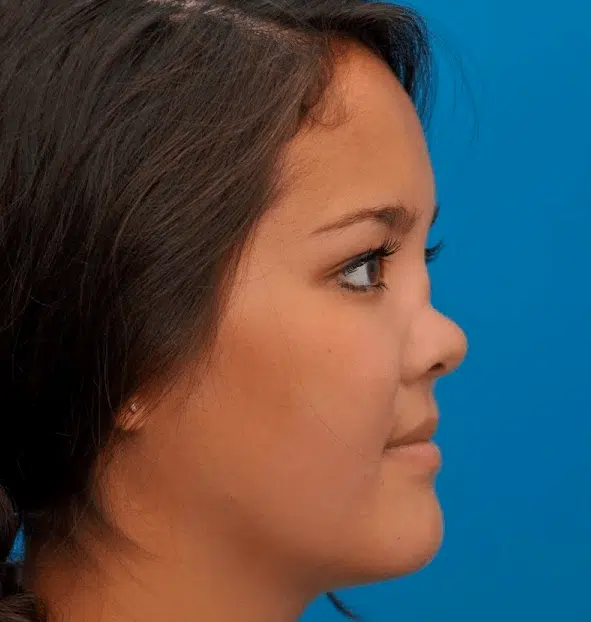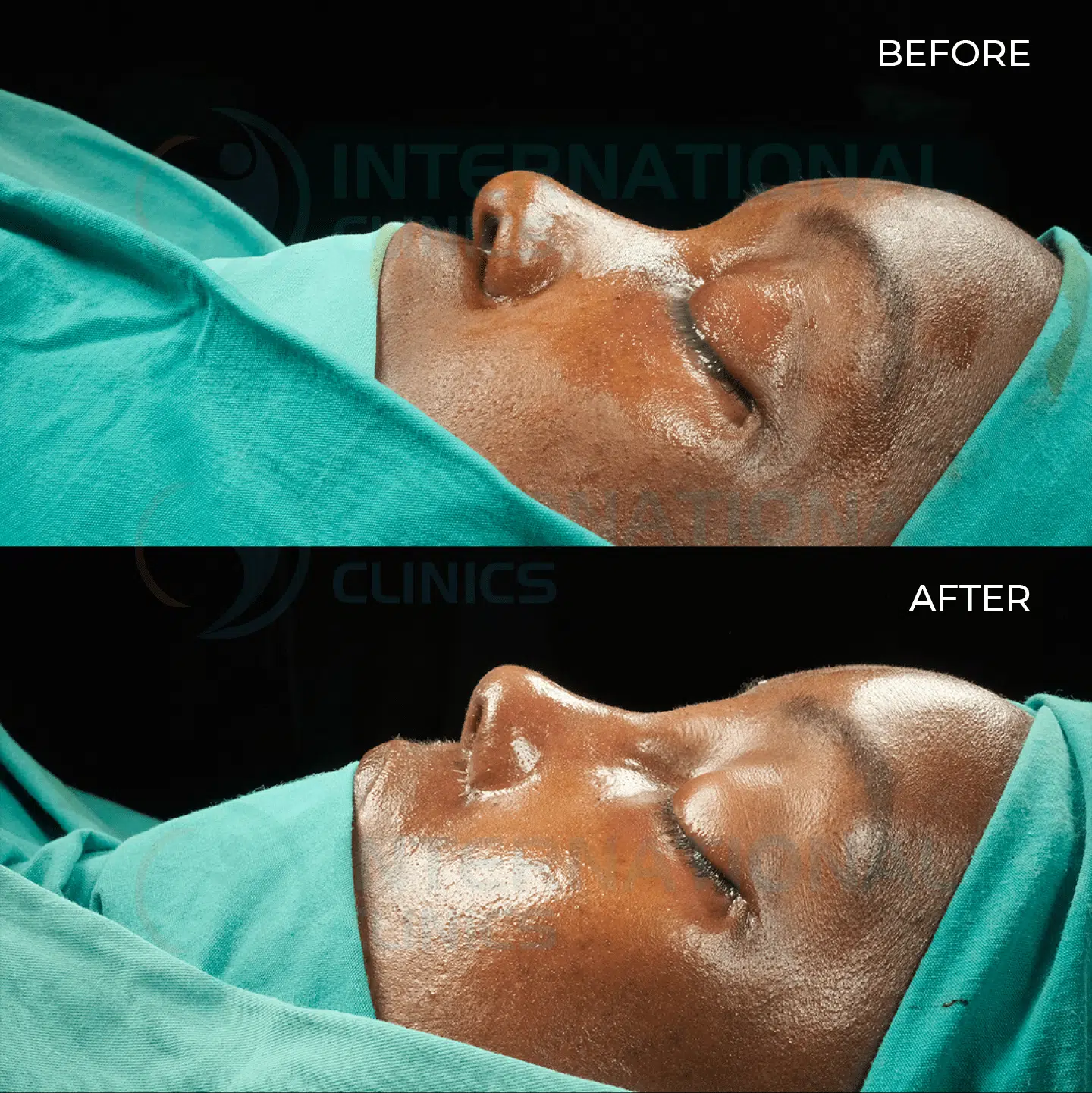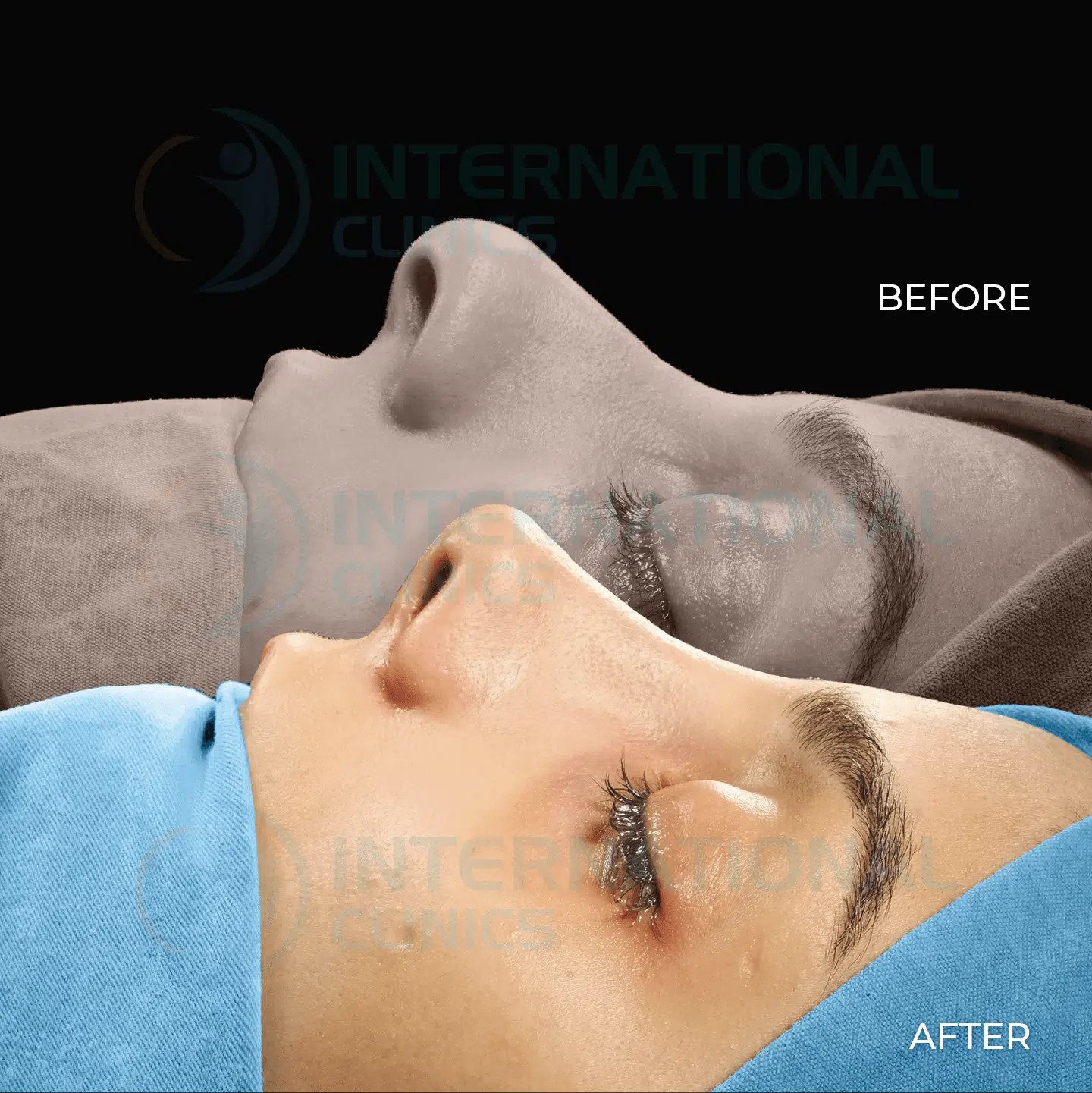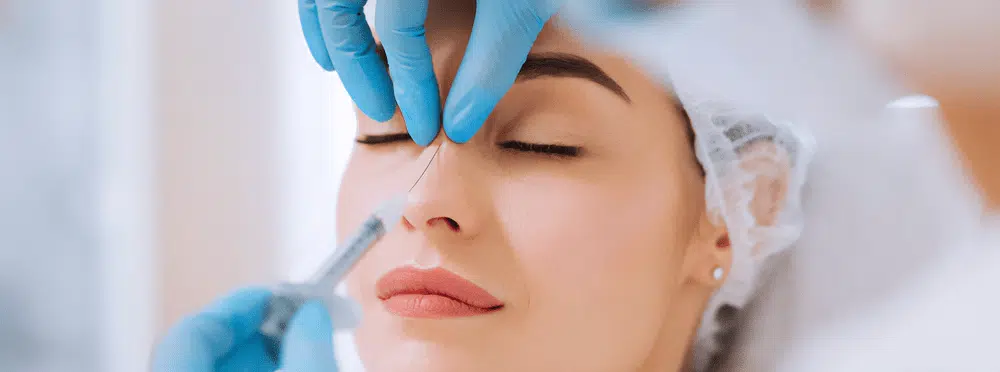The nose often attracts scrutiny from people of all ethnicities when they examine themselves in the mirror. The nose structure comprises cartilage and bone, which work together to support the skin. An ethnic rhinoplasty or nose job may enhance the shape of these components in people of different ethnicities.
Indeed, this plastic surgery in Turkey may be the key to improving the shape of the nose may appear flat, wide, narrow, bulbous, or even bumpy. In other words, an ethnic nose job can solve a variety of nose irregularities and ethnic variations. Interestingly, ethnic variations should be taken into account even for people who choose nonsurgical nose job.
However, the face is unique for each individual; thus, it’s unrealistic to expect your nose to look like someone else’s. Furthermore, significant changes frequently necessitate multiple procedures and techniques, which can be costly and pose a greater risk during surgery.
What Is Ethnic Rhinoplasty?

Ethnic rhinoplasty or nose job is a cosmetic procedure to change the appearance of the nose in people of different ethnic backgrounds. This may include African Americans, Asians (such as Koreans, Japanese, Chinese, and Filipinos), Hispanics, and others.
This type of surgery is for individuals looking to correct a flattened nose, flaring nostrils, or other ethnic characteristics. Unlike traditional rhinoplasty in Turkey, which usually involves reducing the nose’s size, ethnic rhinoplasty focuses on adding cartilage and structure to enhance the nose’s appearance.
The procedure requires specialized expertise to ensure the best possible outcome. By carefully adding cartilage and structure to the nose, surgeons can create a more balanced and harmonious facial profile that suits your unique features.
According to a study, the surgeon’s ability to execute a successful ethnic rhinoplasty strongly depends on developing objective criteria and proportions of beauty that are specific to different ethnicities. This approach ensures that the results of the procedure will be in harmony with the patient’s unique background and facial anatomy.
Benefits of Ethnic Rhinoplasty
According to many observers, the ethnic nose job is a growing trend. The are several benefits or advantages to the ethnic nose job. These may include:
- Elevate a too-flat nose, which appears more pronounced and prominent.
- Define a too-small nose and enhance bring balance to the face.
- Improve the balance of the nose with other facial features, such as the chin and forehead.
- Reduce the width of nostrils and create a more natural and proportional look.
- Reduce the overall width or length of a nose that may be disproportionate to the rest of the face.
- Enhance symmetry in facial features and build a more flattering facial profile.
- Make subtle, yet impactful alterations to the nose that can boost self-esteem and confidence
Candidates for Ethnic Rhinoplasty
The physical traits and facial shapes within each ethnic group are diverse and unique. However, regardless of ethnic background, there are certain conditions that often lead patients to consider rhinoplasty.
One such condition is a bulbous tip, where the end of the nose is large and fleshy. Another condition is a flat or broad tip, where the internal cartilages that create the external appearance of the tip are splayed apart, leading to a wide tip. A third condition involves the bridge of the nose, which can be wide or narrow.
Finally, some patients seek rhinoplasty due to breathing problems caused by structural issues, such as a deviated septum or a droopy tip. These conditions can make it difficult to breathe and may require surgery to correct. Some people may choose to undergo other facial plastic procedures along ethnic nose job, such as facelift, to get better overall results and desirable changes.
Types of Ethnic Rhinoplasty

The types of ethnic rhinoplasty encompass different subcategories that target specific ethnic groups:
African-American Rhinoplasty
African American nose anatomy often differs from those of European or Middle Eastern descent. In this case, the nose appears broader and flatter. Despite seeking improvement, African American rhinoplasty patients often aim to maintain their unique heritage and identity.
According to a study, understanding rhinoplasty in African Americans requires the categorization of nose features into three main categories: African, Afro-Caucasian, and Afro-Indian. The same study also emphasized the importance of preserving the ethnicity of the African American patient.
Refining the nasal tip is more challenging due to the thicker skin commonly found in African Americans. Hence, the procedure typically involves lifting the nose bridge and narrowing nostrils, which requires special care due to the comparatively short nasal bones in African Americans.
Asian Rhinoplasty
Asians often have smaller and flatter noses compared to people of European or Middle Eastern descent. Of course, this may require special consideration in rhinoplasty procedures. For Japanese, Korean, Indonesian, Filipino, and Chinese patients, the aim often involves lifting the bridge of the nose and, in some cases, narrowing the nostrils.
As is the case for African America, most Asian rhinoplasty patients seek to enhance their nose’s appearance while preserving their heritage and identity. Furthermore, special care must be taken in due to the technical challenges that may arise, such as short nasal bones.
Hispanic Rhinoplasty
The topic of the Hispanic nose job is multifaceted and diverse. Latin culture is rich and encompasses different ethnicities, languages, and geography. Due to these variations, grouping the entire race into one category would be a mistake for any skilled Surgeon.
Within the Hispanic community, a wide variety of physical features, including facial features, skin colors, skin thickness, and nasal sizes, are encountered. As in any ethnic nose job procedure, it’s essential to follow the principle that says, “the nose must fit the face”.
While there is considerable variation amongst patients, some common anatomic features include small and short nasal bones. Therefore, facial analysis is critical to ensure a proper diagnosis of the ideal balance and cosmetic or functional issues that require correction.
Techniques of Ethnic Rhinoplasty Procedures
Ethnic rhinoplasty involves a range of procedures to enhance the nose’s appearance and balance its proportionality. Below are some of these techniques:
- Augmentation: This approach involves making subtle changes to the angles and definition of certain areas of the nose. To do this, surgeons rearrange cartilage to achieve a more harmonious and natural-looking nose without adding or taking away from its overall size.
- Projection: In this technique, the surgeon adds cartilage to the nose and enlarges its size. They graft cartilage from the septum or even ribs. The result is a narrower, more elegant, and more balanced-looking nose. This technique is more common in African American, Asian, and Hispanic patients.
- Reduction: This approach involves taking cartilage and bone away from the nose to reduce its physical size. The goal is to bring protruding components closer to the rest of the face. This technique is often a good choice for Middle Eastern patients.
- Revision rhinoplasty: A require revisional surgery is a great option to correct or refine a previous procedure. However, this surgery requires an experienced and highly trained surgeon to get the best outcome.
Ethnic Rhinoplasty Before and After
The best way to determine the skill of a surgeon or the work of a clinic is to look at their before and after photo gallery. A skilled surgeon will showcase natural-looking results that are consistent with the patient’s ethnicity.
Obviously, these photos will provide evidence of the surgeon’s ability to understand and respect the unique anatomical features and cultural aesthetics of different ethnicities. Below are some before and after images of patients who underwent ethnic rhinoplasty:


Ethnic Rhinoplasty Turkey
The ethnic nose job has been on the rise in recent years, particularly in Turkey. Indeed, the country has become a popular hub for people from diverse ethnic backgrounds who want to improve their nose appearance.
There are many Turkish surgeons who have the expertise to help patients achieve the desired nose shape while preserving their unique ethnic features. Below are some of the reasons that make Turkey the preferred place for ethnic nose jobs:
Lower Costs
Unsurprisingly, the lower cost of treatment in Turkey is the main motive behind the influx of patients who seek ethnic nose jobs in the country. Compared to many other countries, plastic surgery prices in Turkey are indeed cheaper.
This makes it more accessible to people who may not be able to afford the procedure in their home country. However, you still need to choose a reputable and experienced surgeon as the low cost can sometimes mean low quality.
Skilled Surgeons
One of the main advantages of having ethnic rhinoplasty in Turkey is the high level of expertise of its surgeons, who are well-trained in ethnic nose job techniques. Moreover, many of these surgeons specialized in certain types of ethnic nose job, such as Asian nose job which is geared toward Chinese and Japanese people.
Exciting Packages
Turkey has a well-developed medical tourism industry with different clinics and hospitals that offer exceptional packages to patients who seek stress-free experiences. The package may include accommodation, transportation, and other services.
Best Ethnic Rhinoplasty Surgeon
The best ethnic rhinoplasty surgeon is hard to pin down due to a lack of data and trustworthy reviews. Hence, it’s a matter of speculation and great controversy. In any case, aggregated opinions nominate Dr. Mustafa Karakaş as the best surgeon for an ethnic nose job, at least in Turkey.
The ultimate goal of rhinoplasty, regardless of the patient’s ethnic background, is to create a natural-looking nose that harmonizes with the other facial features. Here when Dr. Mustafa Karakaş shines. He has adequate training, experience, and specialization sculpt facial features.
After all, the nose should blend seamlessly with the face and appear as if it belongs there. Other honorable mentions include Dr.Moustafa Mourad, Dr. Robert Kotler, Dr. Philip Miller, and Dr. Pramit Malhotra.
Risks of Ethnic Rhinoplasty
Like any medical procedure, ethnic rhinoplasty comes with potential risks. Fortunately, the risks associated with rhinoplasty are much lower when the procedure is performed by an experienced plastic surgeon in an accredited clinic.
Furthermore, with proper care and attention from a qualified surgeon, the risks of ethnic rhinoplasty can be minimized, and patients can achieve the natural, balanced results they desire. In any case, the risks of the procedure may include:
- Skin discoloration
- Bleeding or infection
- Altered sensation in the affected area
- Nerve damage
- Breathing obstructions
- The need for revision surgery
- Asymmetries
Ethnic Rhinoplasty Cost
Factors such as complexity and the time required to perform the procedure play an important role in determining the overall cost of the procedure.
Typically, this type of rhinoplasty involves the use of cartilage grafting, which can add to the cost. Besides the cost, it’s important to prioritize the quality and safety of the surgery. Nonetheless, rhinoplasty cost in Turkey remains very affordable to most people. The below table gives an estimated cost for an ethnic nose job in different countries:
| Turkey | 3000-5000 US dollars |
| United States | 4000-10000 US dollars |
| United Kingdom | 4500-9000 US dollars |
| Germany | 3700-5000 US dollars |
| Thailand | 3500-7000 US dollars |
| China | 3500-8000 US dollars |
| South Africa | 3700-7000 US dollars |
| Indonesia | 3400-8000 US dollars |
The Bottom Line
Ethnic nose jobs are soaring in popularity among people of different ethnic and cultural backgrounds. For many, the surgery is a long-waited dream to completely reshape the nose and get a touch of perfection.
However, ethnic nose job refers to multiple types of nose surgeries geared for people with specific facial features. It encompasses Asian, Hispanic, and African nose jobs.
International Clinics in Turkey is one of the prominent names in the field of ethnic rhinoplasty. Thousands of patients from different spots of the world visit our clinics each year to receive the procedure. You can reach us right away to get a free consultation. Just click on the Contact Us button below.
Frequently Asked Questions (FAQs)
What Is the Difference Between Rhinoplasty and Ethnic Rhinoplasty?
The difference between rhinoplasty and ethnic rhinoplasty lies in the targeted segment of patients. Ethnic rhinoplasty is for individuals of non-Caucasian descent who have different nasal structures and facial features.
How Is Ethnic Rhinoplasty Done?
Ethnic rhinoplasty is done using different approaches and techniques, depending on the patient’s needs. If you opt for nose augmentation, for instance, your surgeon will need to use your own cartilage (from the ear, ribs, or nasal septum) to complete the procedure.
How Long Does Ethnic Rhinoplasty Take to Heal?
Ethnic rhinoplasty takes around 2-3 weeks to heal. Some patients, however, may need up to a year to completely recover, depending on the complexity of the procedure and the potential side effects.
What Is the Shape of Arab Nose?
The shape of the Arab nose is noticeably curved and droopy. This nose shape is common in the Arabian Peninsula, Jordan, Syria, Egypt, and Iraq. The curved nose is a symbol of beauty and cultural identity among Arabs.
What Kind of Nose Do Middle Easterners Have?
Middle easterners often have a long and droopy nose with a significant bump that creates a convexity. In addition, some may also have a weak tip that droops when the individual smiles.
What Are the Side Effects of Ethnic Rhinoplasty?
The side effects of ethnic rhinoplasty include nosebleeds, numbness, nerve damage, and asymmetries, among others.
Read more: Otoplasty in Turkey: Advantages & Costs






